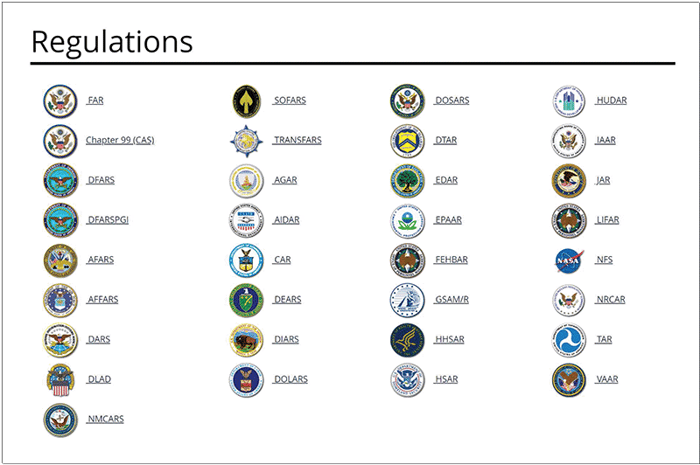The Federal Acquisition Regulation (FAR) is the straw that stirs the acquisition process for all executive agencies.
Acquisition professionals and stakeholders know first-hand the complexities and problems involved in updating a Government Agency’s Supplemental FAR.
In the three-part series on Understanding the Federal Acquisition Regulation (FAR) Process, we will cover:
- The basics of FAR and supplemental FAR (part 1)
- Problems and consequences of failing to update the FAR (part 2)
- How Markon streamlines the updating process for government agencies (part 3)
What is the Federal Acquisition Regulation (FAR)?
The FAR is the primary regulation for use by all executive agencies in their acquisition of supplies and services with appropriated funds. The purpose of the FAR is to publish uniform policies and procedures for federal agencies to follow when going through the procurement process. The FAR also contains standard solicitation provisions and contract clauses and the various agency FAR supplements. It became effective on April 1, 1984.
Which branches of government oversee the FAR?
The Federal Acquisition Regulatory Council was established to assist in the direction and coordination of Government-wide procurement policy and Government-wide procurement regulatory activities in the Federal Government, in accordance with Title 41, Chapter 7, Section 421 of the Office of Federal Procurement Policy (OFPP) Act. The Administrator, in consultation with the Council, shall ensure that procurement regulations, promulgated by executive agencies, are consistent with the Federal Acquisition Regulation (FAR) and in accordance with any policies issued pursuant to Section 405 of Title 41, United States Code.
The Council manages, coordinates, controls, and monitors the maintenance and issuance of changes in the FAR. In accordance with the OFPP Act, the FAR Council membership consists of the Administrator for Federal Procurement Policy, Office of Management and Budget, and (A) the Secretary of War, (B) the Administrator of National Aeronautics and Space; and (C) the Administrator of General Services.
How many Supplemental FARs are there?

There are 31. For example, the Department of War has DFARS, which is geared toward Department of War contracts. The graphic above shows some others.
How is a FAR Supplemental updated?
An agency’s FAR supplement is designed to implement and supplement the FAR with guidance unique to the Agency. An update must follow a deliberate process to maintain the integrity of the policy.
-
Identify the need – An update may be required due to a change in the FAR, updates to Federal guidance, or internal Agency direction.
-
Draft the update – Benchmarking other Federal agencies’ policies and thorough research of internal processes can ensure that the proposed changes will meet the needs of the acquisition workforce. Draft the updates to communicate the extent of the changes and the impact on the public for internal review. Present the updates to internal stakeholders to ensure that the changes will meet the needs of the Agency before initiating the rulemaking process.
-
Publicize the update – Work with the Federal Register to release a proposed rule for public comment. Interested parties are provided with an opportunity to comment on and suggest improvements. This may lead to changes that can improve the policy for the Agency.
-
Finalize the policy and communicate the changes – Incorporate the feedback from public comment into the final revision of the FAR supplement and finalize the update. It is critical that these changes are communicated to the acquisition workforce and the necessary instruction and training are provided to effectively execute the new policy.
References:
Office of Management and Budget. (n.d.). Federal Acquisition Regulatory Council. https://obamawhitehouse.archives.gov/omb/procurement_far_council
Office of Management and Budget. (n.d.). FAR Council Members. https://obamawhitehouse.archives.gov/omb/procurement_far_members

